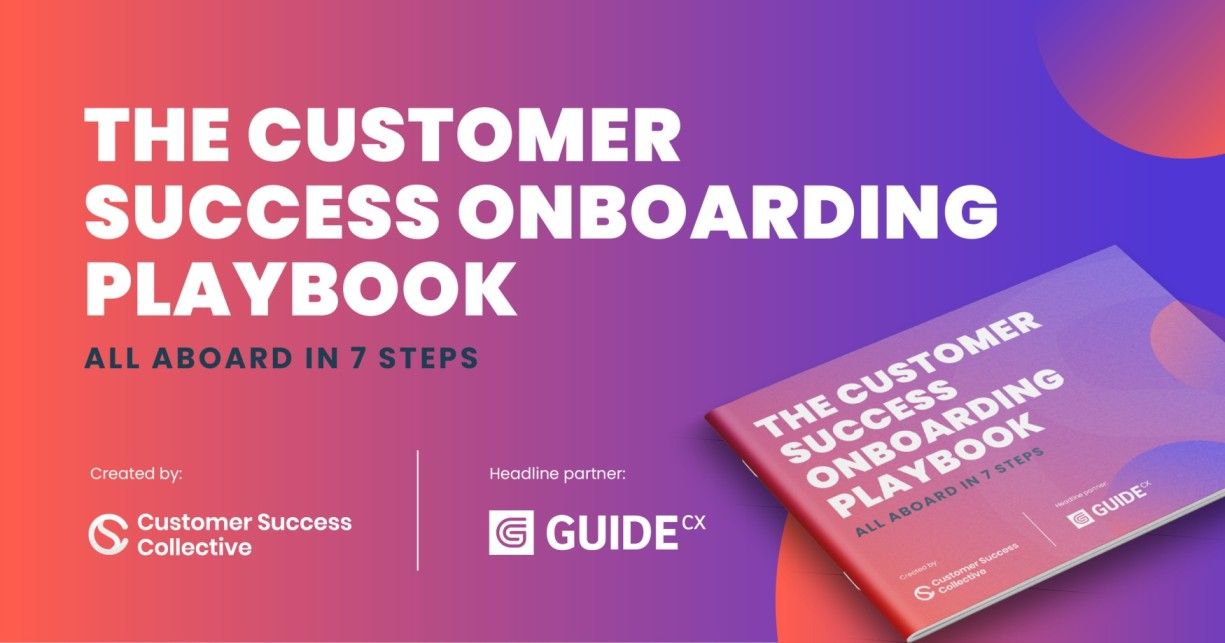You might be familiar with the concept of onboarding a new employee: extending a job offer to a new hire, setting them up in the system, and training them on all policies and procedures, thereby setting them up for success.
A good onboarding process can ensure that 69% of employees stay with a company for at least three years, while a bad experience doubles their chances of looking for new work.
Customer onboarding, while a fairly new idea, works on a similar premise: it’s a process that helps customers get up and running with your product or service, with the aim of retaining customers.
For a SaaS company, customer onboarding might be selling a software solution to a client, setting them up in the system, and then providing all the training necessary to help them understand and get the most from the software they purchased.
For a health tech company, it might be helping its clients embrace digital technology, taking the customer through the tasks from purchase to implementation and additional support. While each industry may have different customer onboarding steps, organizations that follow this process are essentially onboarding their customers.
In 2017, GUIDEcx's founder and CEO, Peter Ord, created the customer onboarding category after he set out to design a software solution that would assist in onboarding customers.
Customer onboarding solutions are designed to automate the tasks and steps in your onboarding process, creating full transparency in the entire project. The automation these tools deliver provides new opportunities for organizational efficiency, customer satisfaction and retention, and increased capacities for both time and labor resources.
How can you know if your organization is ready for a powerful solution like this?
Here are 15 key indicators that your organization is ready and would benefit from implementing a customer onboarding solution:
- Your process is repeatable
- Your onboarding process is complex
- You know your processes inside out
- Your onboarding timeline drags out
- You’re not seeing value where you expected
- You can’t easily track key metrics
- You wish you had access to better features or processes
- Your customers are dissatisfied or disengaged
- Your customers are digitally savvy
- Your project managers are feeling overwhelmed
- Your organizational goals can be achieved with an automated onboarding process
- You have buy-in from key stakeholders
- You have a team member who can support the platform update
- You have the time to onboard your organization
- You’re ready to improve your ROI
Let's get started!
1. Your process is repeatable
These can all be automated if the current steps in your onboarding process are repeatable, such as sending a welcome email, sharing paperwork or files, setting up a digital workspace, and conducting training walkthroughs.
Digitizing your process will save time and money, increase your overall efficiency and productivity, reduce human error, and improve consistency. Automated processes also increase your ability to scale, ensuring the overall system is faster and delivering value more quickly.
While repetitive steps give you a great head start in digitizing the customer onboarding experience, automating independent or unique tasks can also greatly benefit from a dedicated onboarding solution.
It’s time for a customer onboarding solution when you have tasks that are loading up your customers and team members with busy work that could otherwise be automated. Let the system do more of the work for you and free your team members to focus on more important tasks with a higher ROI (see the increased capacity discussion below).
2. Your onboarding process is complex
Onboarding varies greatly between organizations and industries. While one company may have 25 steps to complete onboarding, another organization may require closer to a hundred steps to get a customer up and running.
Add intricate task dependencies in which one task must be completed before you can complete steps two, three, and four, and you’re dealing with a complex system of interconnected steps. An onboarding solution that automates and connects tasks ensures every step in the process is completed in the order in which it was set up.
One sign it’s time for an onboarding solution is a deep and complex process. You want to ensure the customer gets the most from the service or product they’ve purchased, and they can only do that if they fully understand its capabilities.
Not only can an onboarding platform drive engagement through an automated process, but the experienced team of professionals you acquire with an onboarding solution also knows when and how to streamline your process. This will make sure tasks are ordered in a manner that makes sense and is trimmed to essential steps.
3. You know your processes inside and out
You won’t really be able to tell if you need an onboarding solution unless you truly know what your process looks like. Walk through the steps as if you're a customer. Map it out, making notes of what worked or where roadblocks occurred.
Is it working the way you intended it to? Now view it through the eyes of the project manager or director who knows the goals for implementation. Did you hit all the marks you were aiming for?
You can’t make an educated decision about whether or not it’s time for an onboarding solution if you don’t know what works and what doesn’t. If there are things that aren’t working, ask yourself if they can be solved with your current process or if a more dedicated system would be a better fix.
Even a system that is working “pretty well” can benefit from an onboarding service that helps you identify additional ways to improve its efficiency.
4. Your onboarding timeline drags
A red flag indicating it’s time for an onboarding platform is an implementation process that drags on and on. If your onboarding process is taking six months, a year, or more, and that seems long to you or your customers, it’s time for an onboarding solution.
Your customers’ success depends upon their ability to get the value they were promised from your product or service as quickly as possible. Long or lagging onboarding timelines waste valuable time and resources for both you and your client and can prevent benefits from reaching the people who need them most. If you need to trim your onboarding timeline and you can’t see a way to do that with your current processes, it’s time for an onboarding solution.
For example, the company Epion Health was facing stretched-out or missed deadlines that were heavily impacting the quality of patient care. Leveraging the intuitiveness of the GUIDEcx software and the customized templates Epion built within the platform, it was able to cut its onboarding timeline by 60 days.

5. You’re not seeing value when and where you expected
Dragged-out timelines can also lead to revenue being left on the table and out of reach until onboarding is complete. If you’re finding yourself missing out on revenue because onboarding is sluggish and slow, an automated system can help you recover that more quickly.
What is your current TTV (time to value), i.e. how quickly are you getting to that first real measurement of value for your organization? Value can be measured by a great customer experience, increased capacity for your organization, cost savings, or an increase in revenue.
“If a client takes two months longer to go live, that’s 60 days worth of patients they missed getting quality measures on,” says Ann Mooney, head of implementation at Epion Health. “This affects their reimbursements from the payers/insurance, and that leaves revenue on the table the longer it takes.”
To measure TTV, use the following formula:

If your current system has a long TTV, then it’s time for an onboarding platform that does more of the work for you and your team. Automated processes in an efficiency-driven platform will help you see the value you’re looking for much more quickly. Don’t leave money on the table or deliver a flat customer experience. Instead, leverage the power of an onboarding solution to get you that value you’re expecting.
6. You can’t easily track key metrics
How many of your customers are completing onboarding? How long is it taking them on average to do so? How much revenue is coming from these customers? If you don’t know or can’t get to that data easily, it’s time for an onboarding solution. In order to understand the success of your sales, the customer experience, and your organizational goals, you need a way to measure and then analyze key metrics.
An onboarding solution, due to its automation and easy accessibility to data, can provide you with a clear picture of performance. If you can’t build reports that give you insight into customer churn, retention, customer satisfaction, engagement, and customer adoption rate, you’re missing out on important information that will drive organizational decisions and direction.
You’re ready for an onboarding solution if you can’t collect that information or you want more powerful insights.
7. You wish you had access to better features or processes
Do you find yourself saying, “I wish I could do…” or “Why can’t I do this when I…” when you’re working through your onboarding process? If so, you’re likely in need of a platform that will deliver a better experience.
What does your ideal “wishlist” look like? What would you capture, collect, or improve with a feature your current system doesn’t provide?
It’s time to upgrade to a customer onboarding solution if you’re looking for features like these:
- Transparency in the overall project progress and task completion
- Automated communication triggers when tasks are complete
- Task dependencies that lead customers through the next steps in order
- A CSAT (customer satisfaction tool) that lets you measure the customer experience
- Status change reasons that update you not only on when a task is running behind but also why
- Enterprise-level reporting, from onboarding revenue to project management time tracking to onboarding project timelines
- GANTT chart capabilities
- Customizable templates
If you’re experiencing the same hiccups in the system time and time again, you’re ready for a solution that solves those issues for you.

8. Your customers are dissatisfied or disengaged
One of the biggest signs it’s time to upgrade to a digitized onboarding solution is the roadblocks and frustrations reported by your customers. They may communicate this through email, phone calls, or customer reviews, or it may only be revealed through a careful study of customer churn (turnover) or retention.
Engagement is another way to measure how satisfied your customers are with your system. If customers are dropping off mid-way through onboarding, there is likely a reason, and you need to know why.
As discussed above, if you’re unable to track these important metrics, it’s time to update your system to an intuitive onboarding solution. While customer dissatisfaction can feel discouraging, it is a powerful way to measure the success of your onboarding process.
Without it, you won’t be able to identify the tasks that are causing headaches or systems that are broken or disconnected. Improving the customer experience will improve retention and increase brand loyalty.

9. Your customers are digitally savvy
If your client base is comfortable with digitized systems, chances are they’re already craving an automated system. In a world of smartphones, AI, and self-driving cars, customers are expecting a system that communicates quickly and effortlessly, delivering a seamless onboarding experience.
Excel spreadsheets or outdated systems are not going to impress or provide your customer with the service they’ve come to expect in today’s digital world. Your customer is well-educated on automated communication systems, digital time tracking, online checklists, and instant customer solutions. You can provide this by delivering an experience that goes above and beyond when you implement an automated system.
10. Your project managers are feeling overwhelmed
Customers are not the only way to measure the success of your system. If your team is feeling overwhelmed, overworked, or stretched thin, it’s likely time for a customer onboarding platform.
Project managers tasked with sending an email or making a phone call every time a customer completes a step are currently inundated with busy work. What other tasks are they performing that an intuitive system could deliver for them?
Catchafire – a company providing nonprofits with choice, capacity, and wrap-around support so they can achieve their missions—needed an onboarding process that would allow it to grow more efficiently. Since the implementation of GUIDEcx, Catchafire has seen a two to three-times increase in its capacity to onboard clients and an increase in its operational efficiency.
“GUIDEcx has really created a strong foundation for us in terms of how we optimize and scale as we grow on different layers. It has streamlined a lot of our processes and created efficiencies that allow us to scale our work.”
- Emma Schrager, Senior Manager of Implementation and Program Operations at Catchafire

11. Your organizational goals can be achieved with an automated onboarding process
What could your organization achieve if it pivoted to an intuitive onboarding platform rather than outdated or manual processes? If your organizational goals include scalable growth, improving the customer experience, helping customers get to value more quickly, building brand loyalty, driving efficiencies within your current system, or increasing your NRR, then you’re ready for a customer onboarding solution.
The results an onboarding platform will deliver align perfectly with these goals and will ease the burdens caused by less-efficient systems. It’s time for an onboarding process that delivers true solutions and powerful results. If you’re ready to take your organization to the next level, you’re ready for this kind of platform.
12. You have buy-in from key stakeholders
When conversations start bubbling up in leadership or team meetings about the need for improvements in the current system, this is an opportunity to build buy-in for an upgraded process. If you’ve collected customer feedback, have data to support the need for a new system, and have team members who need additional support, you’re well on your way to creating champions who will back an onboarding platform adoption.
Work together to find a solution for everyone – both internal and external stakeholders. Eliminate friction and pushback by listening carefully to everyone’s questions and concerns. Having the green light from key stakeholders to find a solution to current onboarding issues is a strong signal that your organization is ready for a more complete and automated onboarding platform.

13. You have a team member who can support the platform update
Achieving buy-in from stakeholders is a huge win for any project. Still, in order to get the most from an onboarding solution, you’ll need a team member to support the implementation and delivery of the platform. Having someone who takes ownership and can manage and drive the update will ensure you get the most from the solution you choose.
Do you have someone in mind who can create bridges between the sales and customer success team, communicate well with customers, understand customer and project managers’ needs, and champion the platform? Then you’re ready for an onboarding solution.
This individual will likely rise from the initial stakeholders who championed looking for a solution in the first place. The right individual will understand the process and know how to get the most out of the integration, becoming invaluable as you implement your updated system.
14. You have the time to onboard your organization
In order to get an onboarding platform up and running, you’ll need time to onboard the key players in your company within the system you choose. You’re about to deliver a new and improved onboarding process to your customers – but in order to do that, you need to onboard your project managers and stakeholders first.
If you can carve out the time to get to know the system and complete the full onboarding process, you’ll be better prepared to provide a positive experience for your clients. You’re ready for an onboarding solution if you’re willing to take the time to complete onboarding as a team. Nothing will prepare you better for strong service delivery than experiencing the system for yourself. If you’re committed, you and your customer will likely succeed.

15. You’re ready to improve your ROI
In our ever-changing economy, efficiency is key. If you’re looking for ways to improve your return on investment and lower overall operational costs, you’re ready for a customer onboarding experience that delivers real value.
A right-sized onboarding platform with scalable solutions can help you achieve that through shorter onboarding times, streamlined systems, automated communications, and stronger reporting capabilities, all of which lower costs and increase labor and time capacities.
Between the need to sift through and create heaps of data and bringing in a developer to help out, the integrations of fraud management company, Kount, were challenging to manage and time-consuming, averaging 90 to 120 days. This meant that Kount was losing valuable time and resources with each implementation.
After implementing GUIDEcx, Kount cut its average implementation time by over 43%. As a result, its revenue has been pushed forward significantly, enabling it to pay sales members and unlock revenue much earlier in the process to speed up initiatives.
Previously, a single implementation manager could balance about 10 to 12 integrations at once; however, with GuideCX, they can average 17 to 20, an increase in capacity of 40%. Without hiring additional managers, they can handle more work than ever before.
“With GuideCX, we have more data. We can easily identify our problem areas. Growing and maturing isn’t intimidating or overwhelmingly challenging.”
- Brooke Cantwel, Customer Experience Manager at Kount
If you’re seeing any of these signs in your organization, you’re ready for an onboarding solution! Once you’ve determined it’s time to implement a more powerful platform, evaluating which option is right for you will be vital.
Do your homework
Make the time to demo the solutions you’re considering, or take advantage of a free trial to measure the solution against your organization’s own goals. Spend the time to look at different solutions carefully, reading up on testimonials and reviews of the platform. Knowing what you need and what you want within a solution will help you deliver the best customer experience possible for your clients.
GUIDEcx can help
You only get one chance to make a first impression when it comes to your clients. Make sure it’s a great one with GUIDEcx.
Our platform gives you the capability to invite, guide, and engage internal and customer implementation teams. This enables organizations everywhere to reduce time to value, create visibility, and save time and money with automation. Ensure project managers and their clients get work done as quickly as possible by partnering with us.



 Follow us on LinkedIn
Follow us on LinkedIn




